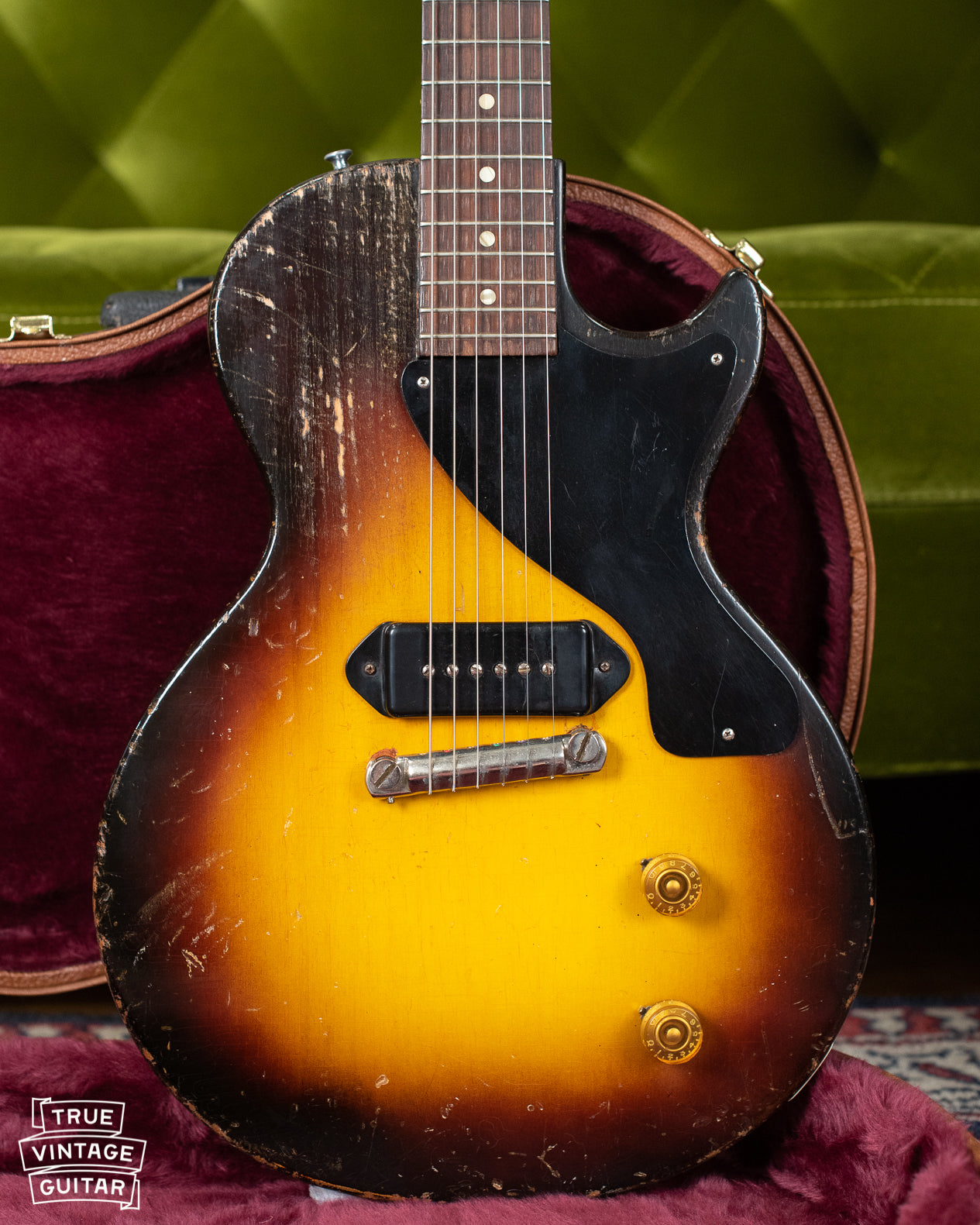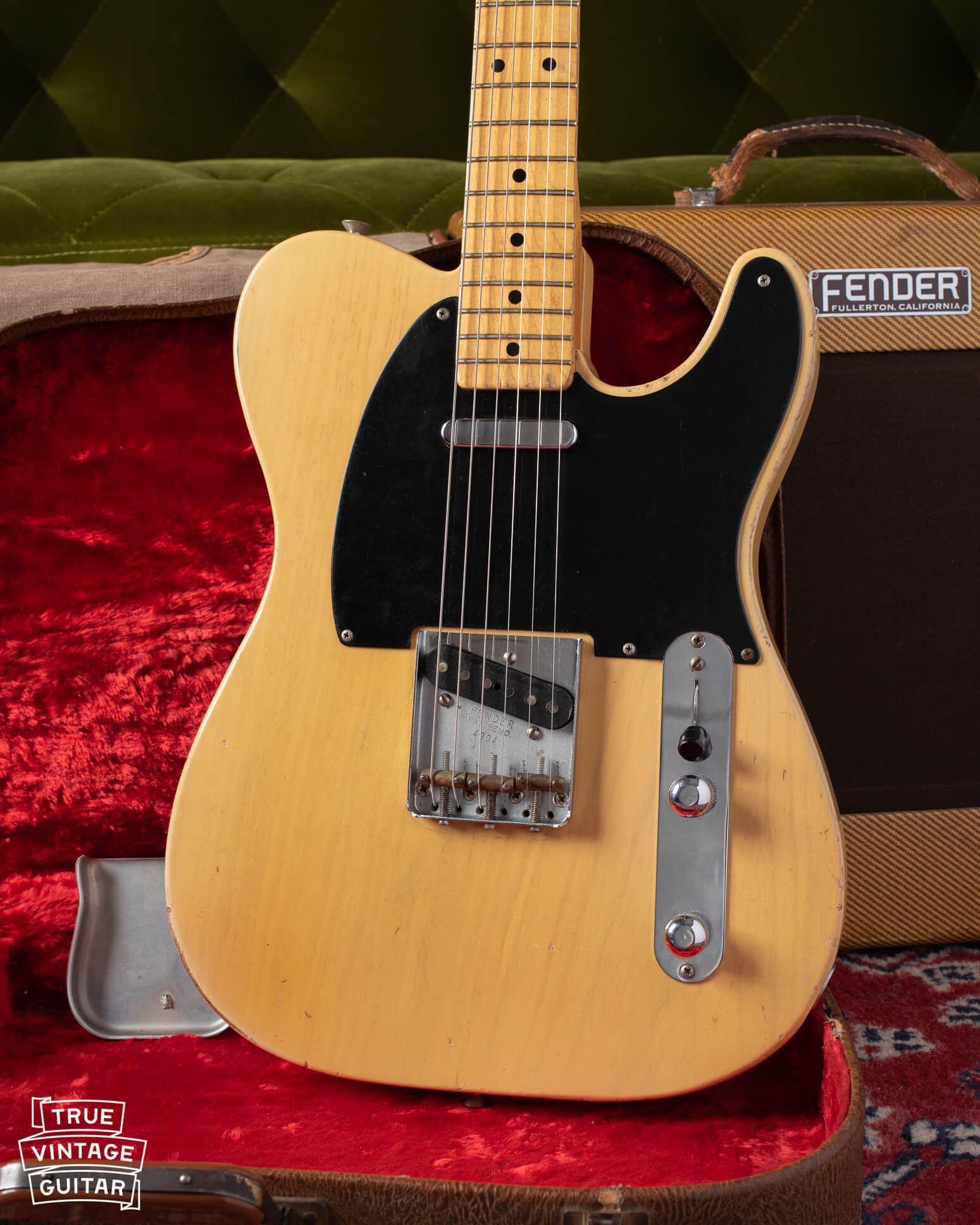This little gem recently breezed through the shop in unrepaired condition. The 000 sized Style 21 model is a 15 1/2" wide auditorium shaped body with Spruce top, Rosewood back and sides (Brazilian in '52), and Rosewood fretboard and bridge. It's a more simply adorned version of the 000-28. This example has had a few unfortunate modifications including tuner holes enlarged for Grover style tuners, an improperly replaced nut, and non-professionally executed refret. The rest of the guitar appears to be in very nice shape which will likely result in a fine instrument once the issues have been addressed.

I've been experimenting lately with photographing the underside of the top of almost every flat-top I sell. The underside of the top is one of the most important parts of an acoustic guitar. It's meant to be structurally rigid to resist the pull of the string tension but also needs to vibrate freely in order to move air like a speaker cone and produce a pleasant tone. Vintage guitars with improper repairs under the top often don't sound quite as nice as guitars with proper repairs and top geometry.
Check out the under side of the top of this 1952 Martin 000-21. It was very dusty inside so that seemed to obscure my pictures a bit. But, you can still see the characteristic "straight" (or unscalloped) bracing of the early 1950s. You can see the original Maple bridge plate. You can see a little bit of wear from string ball ends on the bridge plate but nothing that can't be addressed by a skilled luthier.



A large part of this guitar's value lies in the absence of loose braces, sloppy brace reglue evidence, or an improper and oversized replaced bridge plate, etc. This is how I like to find a vintage guitar. The neck angle can easily be addressed by a neck set. The fretboard can be refretted and have the chips dressed. The headstock tuner holes can be bushed and have vintage or reproduction vintage style tuners installed. A forgery grade bone nut and saddle can be installed. A skilled hand can bring this guitar roaring back to life with standard repairs.
A skilled luthier sometimes can't remove an oversized bridge plate or cap glued in with epoxy or similar without damaging the top. He or she may not be able to remove the lake of glue meant to reglue a back brace (and the brace may still be loose!). Fortunately for this 000-21, none of that ever happened.






